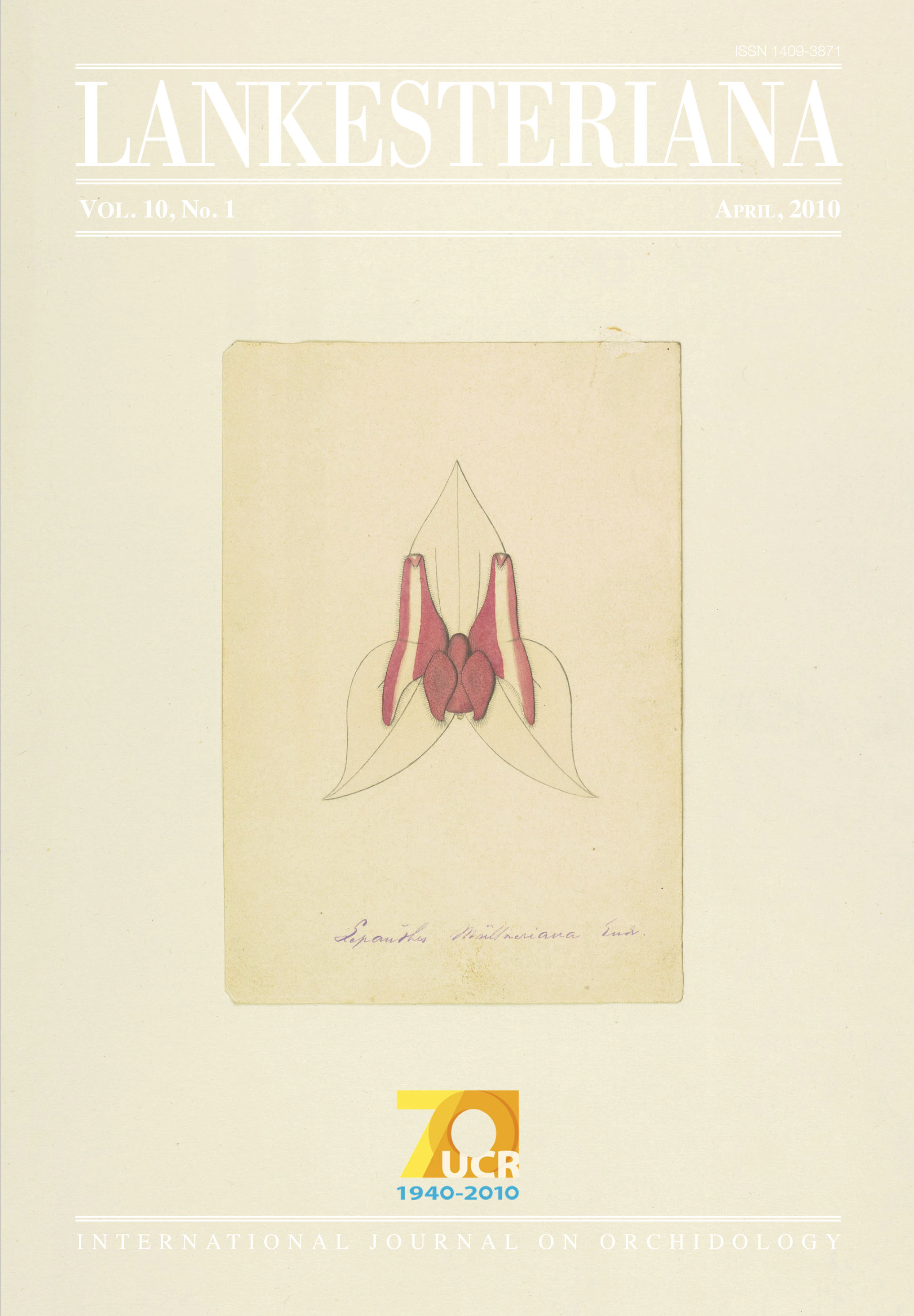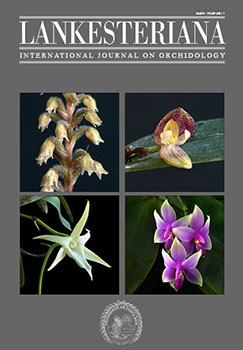Lord of the flies: pollination of Dracula orchids
DOI:
https://doi.org/10.15517/lank.v10i1.18318Palabras clave:
cloud forest, fly pollination, mycophilous, odor, pollinator behavior, ZygothricaResumen
La forma y el olor de los labelos de las orquídeas del género Dracula se asemejan a hongos, y por mucho tiempo se ha mantenido la hipótesis de que estas orquídeas mimetizan hongos y dípteros con ciclos de vida asociados con los hongos (micófilos) accidentalmente polinizarían estas flores mientras ovopositan. La morfología floral, los polinizadores y mecanismos de polinización fueron estudiados en Dracula lafleurii Luer & Dalström and D. felix (Luer) Luer en un bosque nublado de Ecuador. Estas orquídeas son efectivamente visitadas en su mayoría por moscas micófilas pero son polinizadas únicamente por moscas drosofilidas del género Zygothrica cuyos ciclos de vida están estrechamente asociados con hongos. Estas moscas realizan despliegues de cortejo y apareamiento en las superficies de las flores de Dracula estudiadas y en este proceso también las polinizan, aparentemente sin ovopositar. El mecanismo de polinización de Dracula ocurre cuando los tóraxes de los polinizadores son atrapados por los márgenes incurvados del rostelo, lo cual crea un ángulo entre el escutelo y el abdomen apropiado para la remoción y deposición de los polinios, una característica que hasta ahora no había sido reportada en las orquídeas.
Descargas
Descargas
Publicado
Cómo citar
Número
Sección
Licencia
Conforme con las Políticas de Acceso Abierto promovidas por la Universidad de Costa Rica, los derechos de autor de todos los artículos publicados en Lankesteriana se encuentran bajo una licencia Creative Commons y pueden ser descargados gratuitamente. Los derechos de autor y de publicación pertenecen a la revista bajo la licencia CC BY-NC-ND 3.0 CR.
Before the publication of the materials submitted by the author(s) in LANKESTERIANA, the author(s) hereby assign all rights in the article to the Lankester Botanical Garden.





